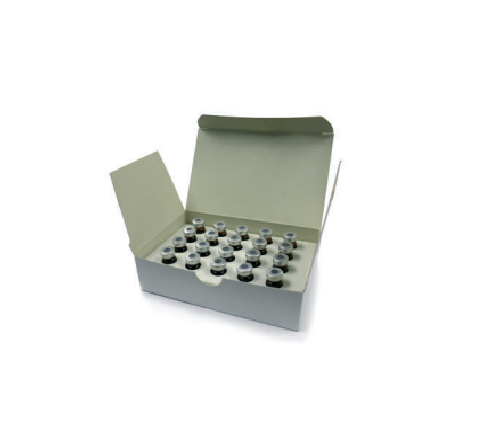e carry a wide choice of GC, HPLC and MS Calibration Standards to facilitate method development and quantitation. Also a wide range of GC derivatization reagents to increase volatility and/or selective detection lowering detection limits with our patented “On-line derivatization option” of the KONIK Multidimensional HPLC+GC and HPLC+GC-MS Systems

GC DERIVATIZATION REAGENTS
Derivatization
Derivatization is the process of chemically modifying a compound to produce a new compound which has properties that are suitable for analysis using a GC. Derivatization is a useful tool allowing the use of GC and GC/MS to be done on samples that would otherwise not be possible in various areas of chemistry such as medical, forensic, and environmental. Derivatization process can increases sample volatility, increase detectability, increase stability, improves selectivity or improves chromatographic effi ciency. GIBNIK Robokrom Autosampler allows automatic derivatization of your sample previous GC injection with complete control of all parameters (temperature, time, agitation,…). Main types of derivatization:
A. Silylation
Silylation is the most widely used derivatization procedure. Silylation produces silyl derivatives which are more volatile, less stable, and more thermally stable. Silylation replaces active hydrogens with a TMS (trimethylsilyl group) and enables the GC-MS analysis of many compounds.
B. Acylation
Acylation reduces the polarity of amino, hydroxyl, and thiol groups and adds halogenated functionalities for ECD. In comparison to silylating reagents, the acylating reagents target highly polar, multifunctional compounds, such as carbohydrates and amino acids.
C. Alkylation and Esterification
Alkylation reduces molecular polarity by replacing active hydrogens with an alkyl group. These reagents are used to modify compounds with acidic hydrogens, such as carboxylic acids and phenols. These reagents make esters, ethers, alkyl amines and alkyl amides. Reagents containing fluorinated benzoyl groups can be used for ECD.

